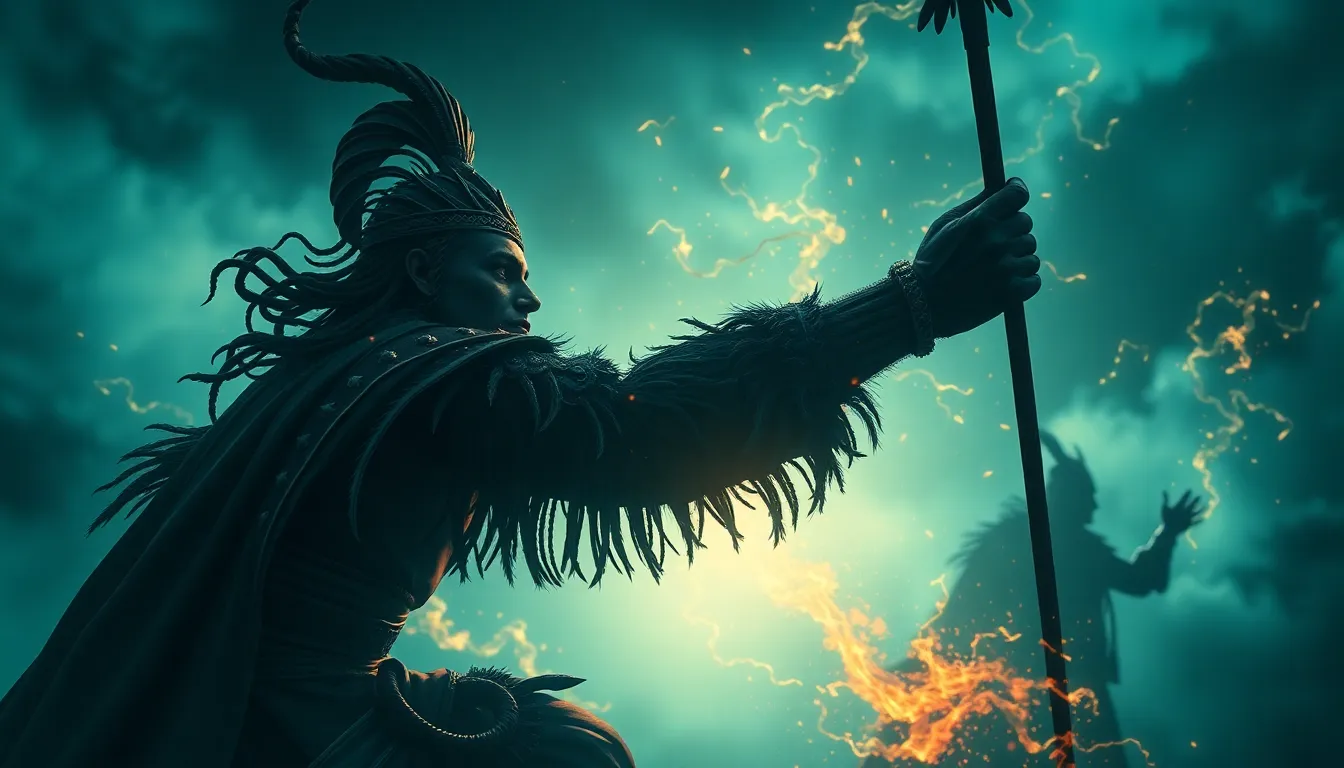Lessons in Laughter: What Trickster Tales Teach Us
I. Introduction to Trickster Tales
Trickster tales are a fascinating genre of folklore that feature clever, mischievous characters who use their wits to outsmart others. These narratives often embody a sense of playfulness and unpredictability, reflecting the complexities of human nature. Historically, trickster tales have been vital in various cultures, serving as a means to convey moral lessons, cultural values, and societal norms.
This article will delve into the world of trickster tales, exploring their archetypes, the role of humor, embedded moral lessons, cultural commentary, psychological insights, and their contemporary relevance. We will also discuss how these tales can be effectively utilized in educational settings.
II. The Archetype of the Trickster
The trickster archetype is characterized by several distinctive traits:
- Cunning and Intelligence: Tricksters are often portrayed as highly intelligent and resourceful, using their wits to navigate challenges.
- Playfulness: They exhibit a playful attitude, often engaging in antics that defy the norms of society.
- Ambivalence: Tricksters can be both heroes and villains, showcasing a moral ambiguity that challenges traditional notions of good and evil.
Common elements found across cultures include themes of deception, transformation, and the subversion of authority. Examples of well-known tricksters include:
- Anansi: A spider from West African folklore known for his cleverness.
- Coyote: A Native American trickster who embodies the duality of creation and destruction.
- Loki: A Norse god associated with mischief and chaos.
III. The Role of Humor in Trickster Tales
Humor plays a pivotal role in trickster tales, serving not only as entertainment but also as a vehicle for deeper understanding. The nature of humor in storytelling often revolves around irony, absurdity, and clever wordplay.
Laughter serves as a coping mechanism, allowing audiences to confront difficult truths and societal issues in a light-hearted manner. It creates a bond between the storyteller and the audience, enhancing engagement and making the lessons more palatable. Through humor, trickster tales invite reflection on serious themes while encouraging a sense of community among listeners.
IV. Moral Lessons Embedded in Trickster Narratives
While trickster tales are often humorous, they carry significant moral lessons:
- Understanding Consequences of Deception: Tricksters often face repercussions for their cunning, illustrating the dual nature of deception.
- The Balance Between Cunning and Foolishness: These tales highlight that while cleverness can lead to success, it can also result in folly when taken too far.
- Ethical Dilemmas: Trickster narratives frequently present ethical quandaries, prompting audiences to ponder the implications of actions and choices.
V. Trickster Tales and Cultural Commentary
Trickster tales serve as a reflection of societal norms and values, often subverting authority and tradition. They provide a voice for the marginalized and challenge established power dynamics. Through their antics, tricksters critique societal injustices, hypocrisy, and the absurdities of life.
This form of social commentary allows audiences to engage critically with their cultural contexts, encouraging them to question the status quo and consider alternative perspectives.
VI. Psychological Insights from Trickster Stories
From a psychological perspective, tricksters represent the complexities of the human psyche. They embody the duality of human nature, showcasing both the light and dark aspects of our character. Trickster tales explore themes of adaptability and resilience, illustrating how individuals navigate the challenges of life.
By embracing the trickster’s spirit, audiences can learn valuable lessons about flexibility, creativity, and the importance of humor in overcoming adversity.
VII. Trickster Tales Across Different Cultures
Trickster figures can be found in myriad cultures worldwide, each with unique characteristics and stories. A comparative analysis reveals both regional variations and similarities:
- African Traditions: Anansi and his cunning ways echo across African folklore.
- Northern American Legends: Coyote serves as a powerful figure in Native American storytelling.
- European Folklore: Figures like Reynard the Fox exemplify trickster traits in Western traditions.
The cultural context significantly influences the messages of these tales, shaping how they resonate with audiences and reflect societal values.
VIII. Contemporary Relevance of Trickster Tales
Trickster tales have found modern adaptations in literature, film, and media, highlighting their enduring appeal. Today’s tricksters often appear as anti-heroes in popular culture, resonating with audiences who appreciate their complexity and relatability.
In contemporary society, the role of tricksters remains significant, as they challenge conventions and inspire innovation. These stories continue to engage audiences, offering timeless lessons wrapped in humor and wit.
IX. Teaching with Trickster Tales
Incorporating trickster tales into educational settings can be a powerful tool for engagement. These narratives promote critical thinking and ethical discussions, allowing students to explore complex themes through laughter and storytelling.
Educators can utilize trickster tales to:
- Encourage creativity and imagination.
- Facilitate discussions on morality and ethics.
- Foster a sense of community through shared storytelling experiences.
X. Conclusion: The Enduring Legacy of Trickster Tales
Trickster tales offer invaluable lessons about the complexities of life, blending humor with moral insights. They encourage audiences to reflect on their actions, challenge societal norms, and embrace the duality of human nature.
As we explore and share these stories across generations, we celebrate their enduring legacy and the importance of laughter in navigating life’s challenges. Trickster tales remind us that while life can be serious, it is also filled with moments of joy, creativity, and unexpected wisdom.



